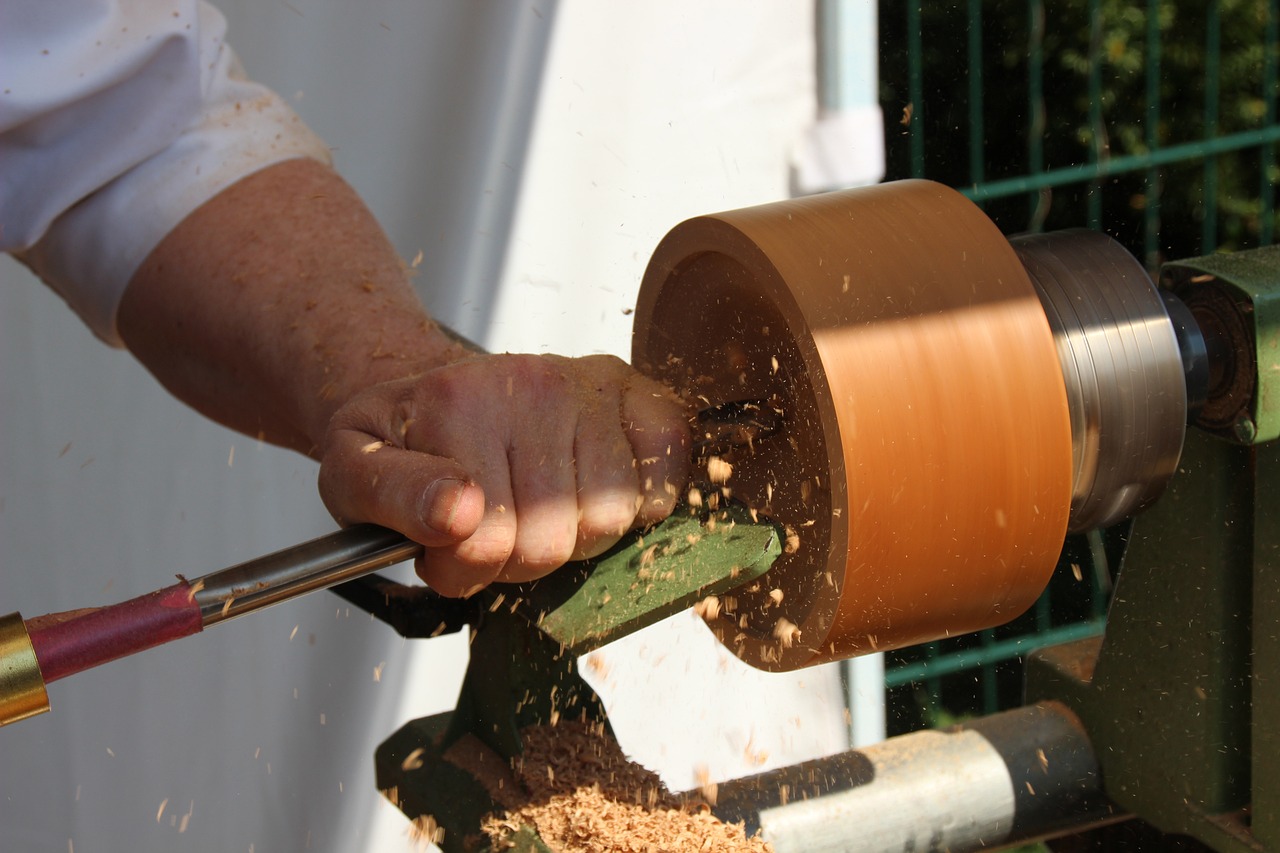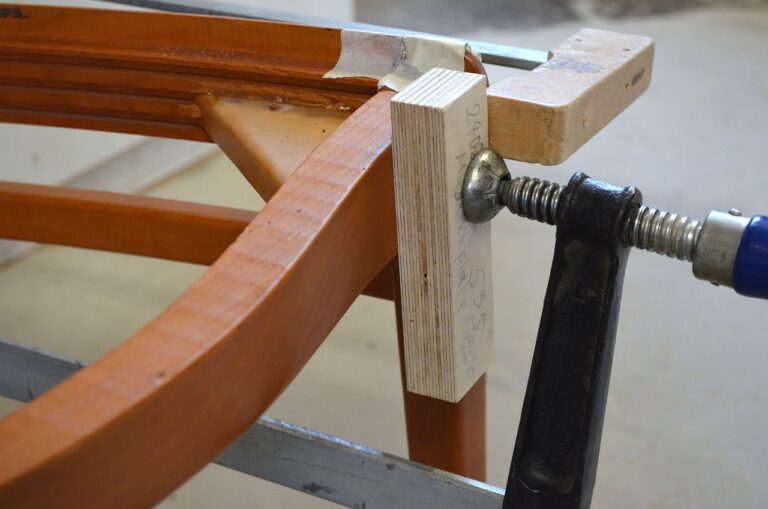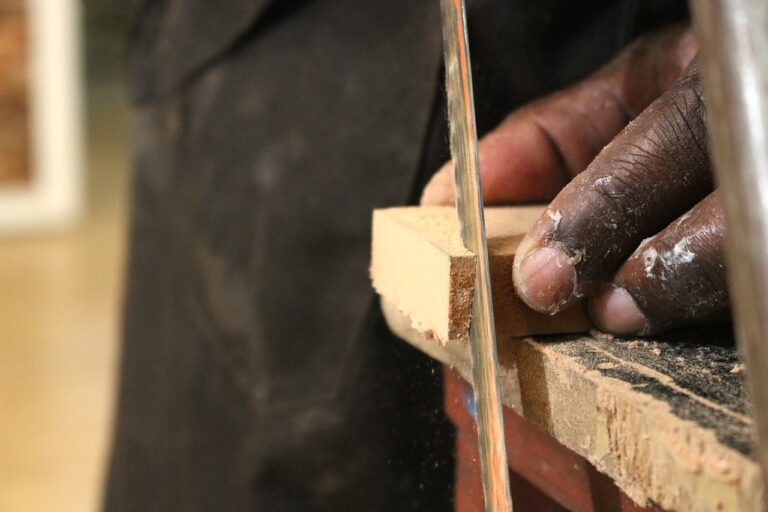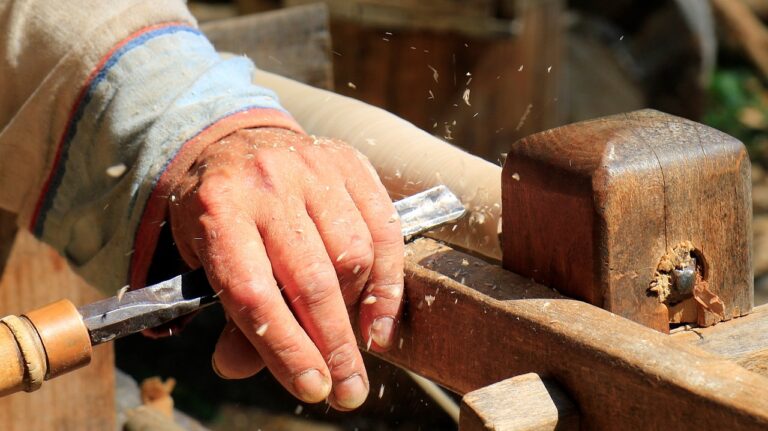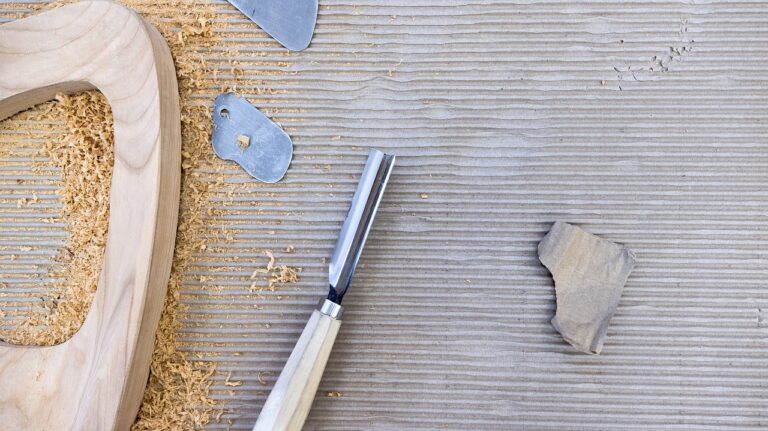Sustainable Crafts: Reusing Wood in Creative Projects
Concern about sustainability has become increasingly relevant in several sectors, including the world of crafts. The reuse of materials has stood out as a creative and ecologically conscious practice. In this context, wood emerges as a versatile element that can be transformed into beautiful craft projects. In this article, we explore the trend of “Sustainable Crafts: Reusing Wood in Creative Projects” and how this practice not only contributes to preserving the environment, but also inspires the creation of unique pieces.
Table of Contents
The Concept of Sustainable Crafts
Sustainable craftsmanship is an approach that combines creativity and manual skills with ecologically conscious and socially responsible practices. This form of craftsmanship is concerned not only with creating unique and beautiful products, but also with minimizing environmental impact, supporting local communities and promoting sustainable materials. Here are some important aspects of sustainable crafts:
- Use of sustainable materials: Sustainable crafts prioritize the use of recycled, reused or natural materials. This includes reclaimed wood, recycled paper, organic fabrics, natural fibers, recycled metal, among others. Choosing sustainable materials helps reduce the demand for limited natural resources.
- Local production: Many sustainable artisans choose to source their materials and resources locally. This not only reduces the carbon footprint associated with transportation, but also supports the local economy and strengthens communities.
- Low-impact crafts: Craft production techniques often generate less waste than large-scale industrial processes. Sustainable artisans often seek to minimize waste and create durable products that can be repaired and reused over time.
- Promotion of local culture: Sustainable crafts often incorporate elements of local culture, preserving traditional traditions and techniques. This helps keep a region’s unique cultural and artistic practices alive.
- Social conscience: Sustainable artists and craftspeople often work under ethical and fair conditions, ensuring that workers are treated appropriately and receive fair compensation for their work.
- Education and awareness: Many sustainable artisans also take an active role in education and awareness about environmental and social issues. They can hold workshops, talks and exhibitions to raise awareness of the importance of sustainability and supporting local crafts.
- Innovation and creativity: Sustainable craftsmanship is not limited to traditional techniques; it also incorporates innovation and creativity to create unique and attractive products that meet modern needs.
- Conscious consumption: Consumers play a key role in supporting sustainable crafts, choosing artisanal products over mass-produced products on a large scale. This promotes the idea of conscious consumption, where the quality and story behind the product are valued.
Sustainable craftsmanship not only offers unique, high-quality products, but also contributes to the protection of the environment and the well-being of local communities. It is an approach that embraces the intersection between art, culture, ecology and social responsibility.
Reusing Wood: A Creative Approach
Reusing wood plays a significant role in promoting environmental sustainability, reducing waste of natural resources and mitigating the environmental impact of the timber industry. Here are some reasons that highlight the importance of reusing wood:
- Conservation of Natural Resources: Wood is a valuable natural resource that comes from trees, which take years to grow and renew themselves. By reusing wood, we avoid unnecessary logging and help conserve vital forests and ecosystems.
- Waste Reduction: Wood is often discarded in large quantities, whether due to demolition, construction or other processes. Reusing wood allows you to give these materials a second life, reducing waste and the amount of waste sent to landfills.
- Energy Savings: Producing wood from trees requires a significant amount of energy. By reusing wood, we save this energy, contributing to the reduction of greenhouse gas emissions associated with the production of new materials.
- Quality Preservation: Reclaimed wood often has unique characteristics, such as texture, color and patterns, that cannot be easily replicated in new wood. These characteristics can be valued in construction and decoration projects, making reuse an aesthetic and practical choice.
- Cost Reduction: Reusing wood can be an economical alternative to purchasing new wood. Furthermore, salvaging and restoring wooden pieces can cost less than producing new materials.
- Promoting Creativity: Using reclaimed wood often requires creative design and construction solutions, which can inspire unique and personalized projects.
- Stimulating the Local Economy: The wood reuse industry can create local jobs in selective demolition companies, carpentry shops and restoration workshops, supporting the community’s economy.
- Environmental Awareness: Reusing wood is a concrete example of how we can incorporate sustainable practices into our everyday lives. This helps raise awareness about the importance of preserving natural resources.
- Diversity of Applications: Reclaimed wood can be used in a wide range of projects, from furniture and flooring to coverings and construction structures, demonstrating its versatility and adaptability.
In summary, reusing wood is an environmentally responsible practice that contributes to the conservation of natural resources, the reduction of waste and the promotion of sustainability. Incorporating repurposed wood into personal and industrial projects is a tangible way to support environmental preservation and adopt a more sustainable lifestyle.
One of the charms of sustainable craftsmanship is the creativity required to transform seemingly disposable materials into works of art. Wood, with its unique texture, colors and shapes, offers countless possibilities. Here are some inspiring ideas for wood repurposing projects:
1. Reimagined Furniture:
Transforming pieces of wood into functional furniture is a growing trend. Benches made from logs, pallet shelves and coffee tables made from pieces of plank are just some of the options. These pieces add a rustic and authentic touch to the decor, while also contributing to reducing waste.
2. Unique Wall Art:
The pieces of wood can be combined to create surprising wall art. From rustic paintings to modern geometric compositions, wood offers a natural canvas to express your creativity.
3. Accessories and Jewelry:
The wood can also be crafted into elegant accessories such as pendants and earrings. Its unique texture adds a touch of originality to jewelry pieces, while its commitment to sustainability tells an inspiring story behind each creation.
4. Educational Toys:
In the children’s world, reused wood can be transformed into educational and safe toys. Building blocks, puzzles and cars are examples of how wood can be used to stimulate children’s imagination and learning.
The Benefits Beyond the Environmental
In addition to the obvious benefits for the environment, sustainable craftsmanship involving repurposed wood offers additional advantages:
Individual Expression:
Each piece of wood has a unique history and characteristics, which are reflected in the resulting handcrafted pieces. Creating projects from repurposed materials allows artisans to express their individuality and style authentically.
Connection with Nature:
Working with wood awakens a deep connection with nature. Craftsmen often value the opportunity to transform an organic material into something beautiful and functional, honoring the essence of wood in their creations.
Stimulating the Local Economy:
Practicing sustainable crafts can strengthen the local economy, as many artisans operate on a small scale. Furthermore, the demand for craft-related materials and tools can boost local businesses.
Practical Tips for Getting Started
If you are interested in diving into the world of “Sustainable Crafts: Reusing Wood in Creative Projects”, here are some practical tips to get started:
- Responsible Collection: Look for scrap wood at home improvement stores, local woodshops or even demolition sites. Make sure the wood is suitable for use and free from harmful chemicals.
- Essential Tools: Have basic woodworking tools on hand, such as saws, sandpaper and drills. These tools will be useful for transforming raw wood into refined crafts.
- Inspiration and Creativity: Explore different project ideas online, on social media or in craft magazines. Use these ideas as a starting point and add your personal touch to create something unique.
- Proper Finish: Choose the right finish to protect the wood and enhance its natural beauty. Natural oils and waxes are popular options for preserving wood’s authentic appearance.
- Share your Journey: If you feel confident in your creations, consider sharing your journey and products on online platforms. Not only can this inspire others, but it can also create a sense of community among craft enthusiasts.
Conclusion
“Sustainable Crafts: Reusing Wood in Creative Projects” is more than a simple trend; it is a movement that reflects a shift in mindset towards more conscious practices. By giving new life to discarded wood, artisans not only create pieces of aesthetic and functional value, but also contribute to preserving the environment and promoting a more sustainable lifestyle.
In conclusion, sustainable craftsmanship represents a powerful manifestation of creativity, environmental awareness and social responsibility. By valuing natural and recycled materials, traditional techniques and local production, sustainable artisans not only create unique and beautiful products, but also contribute to protecting our planet and supporting local communities. Sustainable craftsmanship transcends the boundaries of mass production, promoting conscious consumption and highlighting the importance of knowing the origin and history behind each handmade piece. It is a testament to our ability to live in harmony with nature and the values that enrich our lives. By supporting sustainable crafts, we are not only purchasing products, we are investing in a more balanced, creative and supportive world. Therefore,
Whether you’re a crafts enthusiast or someone looking for ways to add a unique touch to your decor, considering using reclaimed wood is a decision that benefits both you and the planet. So grab your tools, let your creativity flow, and start exploring the inspiring world of sustainable wood crafts.

